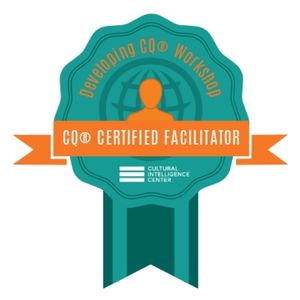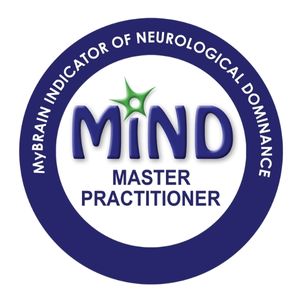Hello everybody. I’m Victoria Rennoldson, Communication and Culture Coach, and welcome to Wednesday Words with me. You can choose to watch this by clicking ‘play’ on the video above, which also has subtitles.
Or, because I know that many of you, just like me, like to listen to podcasts when you’re out and about, you can listen to the audio only version, by clicking below:
Finally, you can also read the blog as well, right here below.
Today we’ll be talking about small talk strategies for in-person events, especially when joining groups.
So, how do you feel about small talk?
Do you feel comfortable making small talk, or does it feel a bit empty to you?
Perhaps you’ve dropped the whole idea of small talk in the last couple of years, when you’ve been doing more virtual meetings and events.
I strongly believe that small talk is not just empty conversation, it has an important role. In fact, it’s a conversation ritual that helps us to get to know the other person. It helps us to connect and build the relationship, and that’s critical if you want to be successful in your interactions. Whether it’s just for that meeting, a project, or for team working and developing your career.
Now that life is getting more back to normal there are many more in-person events going on, and whether that’s for networking, events, internally or externally, we might need to get used to this idea of small talk again.
I know that some of my clients find the idea challenging, particularly if they’re feeling rusty after the last few years. So today I want to share my strategies for small talk confidence in these types of events, particularly when you’re talking with groups of people.
The first thing to remember is that it’s best to choose smaller groups of people to join. Ideally you’re looking for a group of people who are chatting, three to four people maximum. The important thing is to confidently walk up and look like you want to join the group, don’t just stand on the edges half listening, because it won’t be obvious to the group that you’re trying to join them.
The next thing is eye contact and smile. This is a highly effective technique. You’re catching one person’s eye and smiling at them, and the natural human reaction to smile back. That immediately creates a connection and makes the whole group aware that somebody is there, that you are waiting to join the group, and usually what happens is the group turns around and sees who it is, and makes a space for you.
Then, I would pause and listen. What’s important here is that you’re joining the group conversation that’s already going on. Take a moment to work out what they are talking about, the topic, your views and how would you like to contribute.
Of course, it’s quite important to build on the existing topic, so I do recommend that even if you have something relevant to share but perhaps is a new topic, hold that thought and build on the existing topic that they’re talking about. Make sure that you’re contributing in a way that’s building the conversation.
Next, think about how you can encourage the small talk to keep going, by asking open-ended questions. What do I mean by this? Examples of open-ended questions include:
What…?
Who….?
How….?
When…..?
Why….?
These are questions where you’re encouraging other people to keep the conversation going, and reply to you. It’s a good way to make sure that you’re not stuck and unsure about where to go next with the conversation. Some examples might be:
‘Who else do you know at this event today?’ or
‘When did this happen?’ or
‘How did you move forward from that challenge?’
Now, the next point is to consider your body language. We forget that when we’re meeting up in person that our body language is even more visible again, and that we need to make clear through our body language clear that we are focused on the small talk conversation. You need to stay very present, so if you have your phone, put it away. If you see a colleague or somebody you know, don’t get distracted. People notice when your eyes are not with them and you’re not interested in the conversation. There are strategies to exit a conversation gracefully and appropriately, and I’ll talk about that in a future episode, but for now, let’s assume you’re having a good conversation, so make that clear through your body language.
Once again, eyes matter. Make sure you’re looking at the person, nod your head occasionally to show that you’re listening to them. Maybe even make some small agreement sounds like: ‘Hmm…’ and of course, make sure that your body is turned towards the other person. People pick up on body language easily, so do make sure that you’re making yours focused on showing the signal that you’re interested and curious about the other person.
And then the final point is that sometimes it’s the other way around: it’s not you that’s joining the group conversation, but it’s somebody else that’s coming in. So I think it’s part of confident communication to encourage others to speak, to join in, and there are a couple of considerations here.
The first thing is to invite their opinion, for example: ‘What do you think about this topic?’. The other key point is to make sure you stick to inclusive topics that you believe everybody has a chance to contribute on. I think there are particular topics which might be controversial, or sometimes just exclude people, for example, topics such as sports don’t appeal to everybody, likewise, religion, detailed political conversations, and even Covid can be divisive, so I would steer clear of these types of conversations, which might exclude certain people.
There you have it, my small talk strategies for in person events when joining group conversations. I am a great believer that small talk strategies are important if we’re going to make great connections and build relationships that impact our performance, our business, and our career.
I also believe that small talk requires effort. In English we say ‘to make small talk’. That means it’s an active creation verb, we don’t just ‘do’ it, it’s not passive, it’s active. I think that’s a great way to think about small talk, and we have to make the effort, to think about how we’re going to connect with others, and how we’re going to join in the conversation confidently.




